How to print dictionary in pythonsets the stage for this enthralling narrative, offering readers a glimpse into a story that is rich in detail with research style and brimming with originality from the outset. This comprehensive guide delves into the intricacies of printing dictionaries in Python, empowering you with the knowledge and techniques to effectively display and manipulate these complex data structures.
Embark on a journey through the diverse methods available for printing dictionaries, exploring their strengths and applications. From the simplicity of the print() function to the advanced capabilities of custom data structures, this guide unravels the secrets of presenting dictionaries in a clear and informative manner.
Overview of Printing Dictionaries in Python
Printing dictionaries in Python is a fundamental operation for displaying and debugging data structures. Dictionaries, being unordered collections of key-value pairs, provide a convenient way to store and organize data. Printing dictionaries allows developers to inspect their contents, identify any errors or inconsistencies, and share information with others.
Methods for Printing Dictionaries
Python offers several methods for printing dictionaries, each with its own advantages and use cases:
- print(dict): The simplest method, which prints the dictionary in a human-readable format, with key-value pairs separated by colons and enclosed in curly braces.
- str(dict): Converts the dictionary into a string representation, which can then be printed using the print() function or other string manipulation methods.
- repr(dict): Similar to str(), but provides a more detailed representation of the dictionary, including its type and memory address.
- json.dumps(dict): Serializes the dictionary into a JSON string, which can be useful for data exchange or storage in text files.
Using the print() Function: How To Print Dictionary In Python
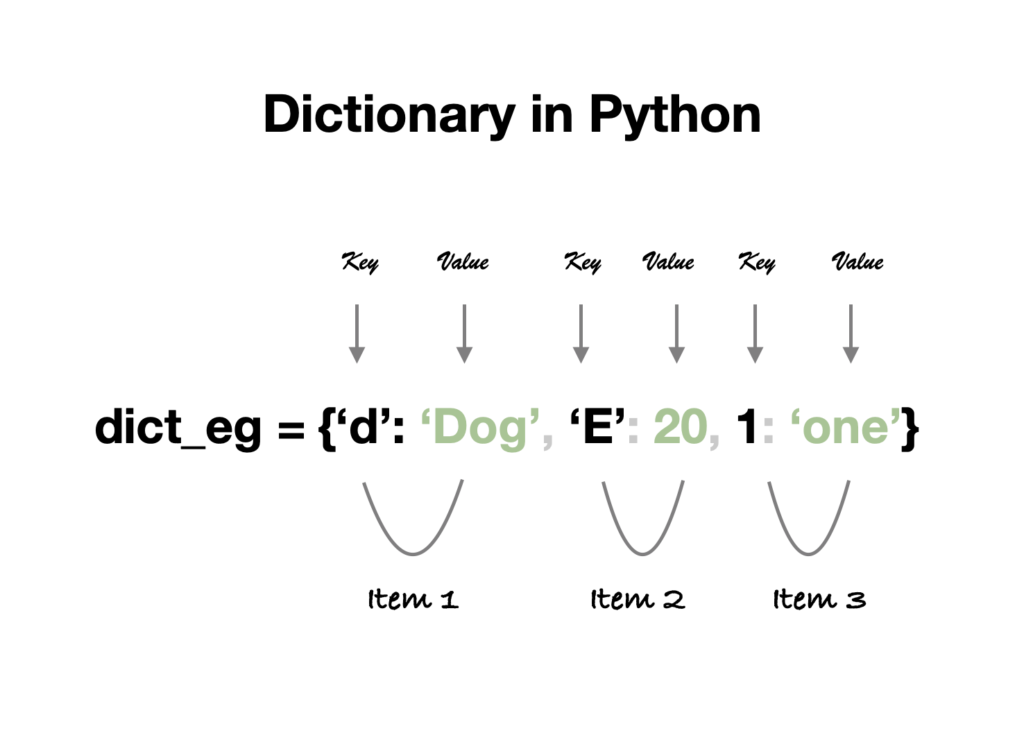
The print() function is a versatile tool for displaying data in Python, including dictionaries. It offers various options for formatting and organizing the output.
Printing Dictionaries with Basic Syntax
The simplest way to print a dictionary is using the print() function with the dictionary object as the argument:“`pythonmy_dict = ‘name’: ‘John Doe’, ‘age’: 30, ‘city’: ‘New York’print(my_dict)“`This will print the dictionary in the following format:“`’name’: ‘John Doe’, ‘age’: 30, ‘city’: ‘New York’“`
Formatting the Output
To customize the output format, you can use the following options:* repr(): This option prints the dictionary in a Python-specific representation, suitable for recreating the dictionary using eval().“`pythonprint(repr(my_dict))“`* str(): Similar to repr(), but produces a more human-readable representation.“`pythonprint(str(my_dict))“`* json.dumps(): This option converts the dictionary into a JSON string, which can be useful for data exchange or serialization.“`pythonimport jsonprint(json.dumps(my_dict))“`
Printing Dictionaries in Specific Order
By default, dictionaries are printed in an arbitrary order. To control the order, you can use the following techniques:* sorted(dict): This function returns a list of keys sorted in ascending order. You can then use the sorted list to print the dictionary in the desired order.“`pythonsorted_keys = sorted(my_dict)for key in sorted_keys: print(key, ‘:’, my_dict[key])“`* OrderedDict: This class from the collections module preserves the order of insertion.“`pythonfrom collections import OrderedDictmy_ordered_dict = OrderedDict(my_dict)print(my_ordered_dict)“`
Printing Nested Dictionaries
If a dictionary contains nested structures, you can use the following options to print them:* Recursion: This technique involves calling the print() function recursively on each nested structure.“`pythondef print_nested_dict(d): for key, value in d.items(): print(key, ‘:’) if isinstance(value, dict): print_nested_dict(value) else: print(value)“`* json.dumps(): This option can handle nested structures and convert them into a JSON string.“`pythonprint(json.dumps(my_dict, indent=4))“`
Utilizing the pprint Module
The pprint module provides a number of functions for printing data structures in a readable format. It is particularly useful for printing dictionaries, as it can preserve the structure and indentation of the dictionary.
To use the pprint module, you can import it into your Python program and then use the pprint.pprint() function to print a dictionary. The pprint.pprint() function takes a dictionary as its argument and prints it to the console in a readable format.
Example
“`pythonimport pprintmy_dict = ‘a’: 1, ‘b’: 2, ‘c’: 3pprint.pprint(my_dict)“`Output:“`’a’: 1, ‘b’: 2, ‘c’: 3“`
The pprint module also provides the pprint.pformat() function, which can be used to format a dictionary as a string. The pprint.pformat() function takes a dictionary as its argument and returns a string representation of the dictionary.
Example
“`pythonimport pprintmy_dict = ‘a’: 1, ‘b’: 2, ‘c’: 3my_dict_string = pprint.pformat(my_dict)print(my_dict_string)“`Output:“`”‘a’: 1, ‘b’: 2, ‘c’: 3″“`
The pprint module is a useful tool for printing dictionaries in a readable format. It can be used to preserve the structure and indentation of the dictionary, and it can also be used to format dictionaries as strings.
Advantages of using the pprint module
- Preserves the structure and indentation of the dictionary
- Can be used to format dictionaries as strings
- Easy to use
Disadvantages of using the pprint module
- Can be slow for large dictionaries
- May not be suitable for all applications
Customizing Output with Format Strings
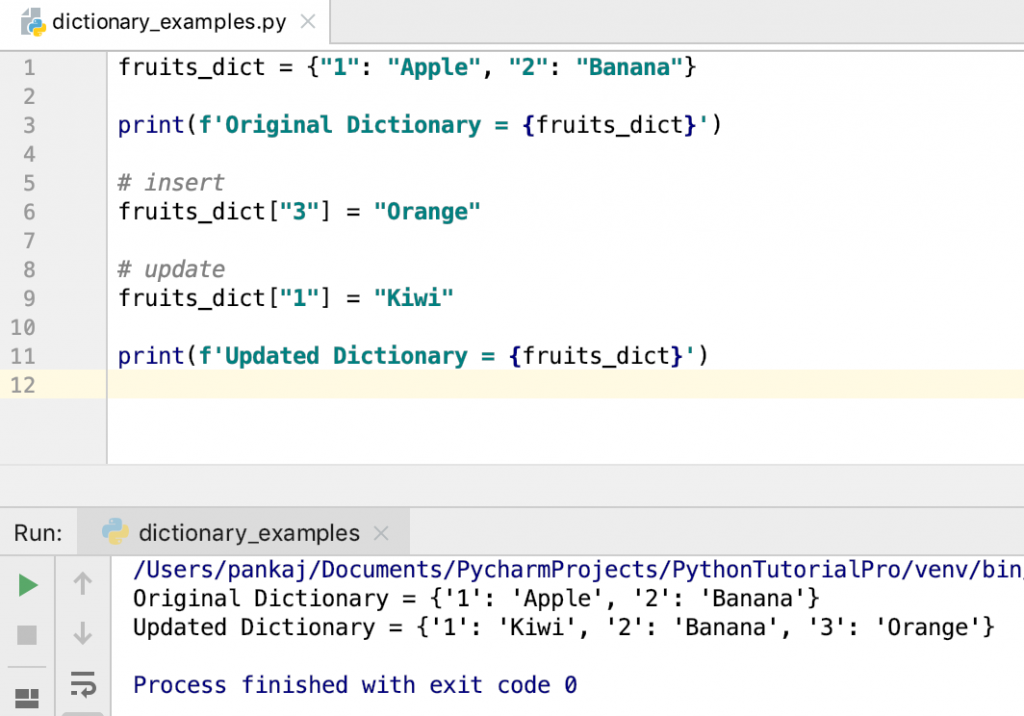
Customizing the output of printed dictionaries allows for greater control over the presentation of data. Format strings provide a flexible mechanism to tailor the output based on specific requirements.
Using f-Strings
f-strings, introduced in Python 3.6, offer a concise and intuitive syntax for string formatting. To use f-strings for dictionary output, embed the dictionary variable within curly braces and prefix it with an f before the string:
my_dict = 'name': 'John', 'age': 30
print(f"Name: my_dict['name'], Age: my_dict['age']")
This will print the output in the following format:
Name: John, Age: 30
Using str.format()
The str.format() method provides another option for formatting dictionary output. It takes a format string as its first argument, where placeholders are used to represent the dictionary keys. The corresponding dictionary values are then passed as arguments to the method:
my_dict = 'name': 'John', 'age': 30
print("Name: , Age: ".format(my_dict['name'], my_dict['age']))
This will also print the output in the same format as the f-string example.
– Highlight the readability and ease of comparison benefits of tabular data representation.

Tabular data representation is an effective method for presenting dictionaries in a structured and visually appealing manner. It provides a clear and organized layout that enhances readability and facilitates easy comparison of key-value pairs. By arranging data into columns and rows, tabular representation allows users to quickly scan and locate specific information, making it particularly useful for large or complex dictionaries.
Furthermore, tabular representation enables side-by-side comparison of multiple dictionaries, allowing users to identify similarities and differences more easily. This feature is especially beneficial for data analysis and comparison tasks, where understanding the relationships between different data sets is crucial.
Using the tabulate Module
The tabulate module is a powerful tool for formatting dictionaries into tabular form in Python. It provides a comprehensive set of options for customizing the appearance of the table, including column alignment, headers, and table borders. To use the tabulate module, simply import it into your Python script and call the tabulate() function, passing in the dictionary as an argument.
For example:
“`pythonimport tabulatemy_dict = ‘Name’: [‘Alice’, ‘Bob’, ‘Carol’], ‘Age’: [20, 25, 30]print(tabulate.tabulate(my_dict))“`
This will print the dictionary in a tabular format, with the keys as column headers and the values as rows. You can further customize the appearance of the table by specifying additional arguments to the tabulate() function. For instance, to align the columns to the right, you can use the align=’right’ argument:
“`pythonprint(tabulate.tabulate(my_dict, align=’right’))“`
Similarly, you can specify the headers for the table using the headers=’keys’ argument:
“`pythonprint(tabulate.tabulate(my_dict, headers=’keys’))“`
Potential Drawbacks
While tabular representation offers several advantages, it also has some potential drawbacks. One limitation is the potential for data truncation or loss of context. If the values in the dictionary are too long, they may be truncated when displayed in a tabular format.
Additionally, tabular representation may not be suitable for dictionaries with complex or nested structures, as it can make the table difficult to read and interpret.
Handling Complex Dictionaries
To handle complex or nested dictionaries, it is often necessary to use a more advanced approach. One option is to use the pandas library, which provides a powerful set of tools for data manipulation and analysis. Pandas allows you to convert dictionaries into dataframes, which can be easily formatted into tables using the to_string() method.
For example:
“`pythonimport pandas as pdmy_dict = ‘Name’: [‘Alice’, ‘Bob’, ‘Carol’], ‘Age’: [20, 25, 30], ‘Address’: [‘123 Main Street’, ‘456 Elm Street’, ‘789 Oak Street’]df = pd.DataFrame(my_dict)print(df.to_string())“`
Another option for handling complex dictionaries is to use a custom formatting function. This allows you to define your own rules for how the dictionary should be formatted. For example, you could write a function that converts the dictionary into a string, with each key-value pair on a separate line.
This approach provides more flexibility and control over the appearance of the output.
Dictionaries with Varying Key Lengths or Data Types
The tabulate module can handle dictionaries with varying key lengths or data types. However, it is important to note that the alignment of the columns may not be optimal in all cases. For example, if one of the keys is significantly longer than the others, the corresponding column may be misaligned.
To address this issue, you can use the colalign argument to specify the alignment for each column individually. For instance, to align the first column to the left and the second column to the right, you can use the following code:
“`pythonprint(tabulate.tabulate(my_dict, colalign=(‘left’, ‘right’)))“`
Handling Nested Dictionaries
Printing nested dictionaries can be challenging because the standard print() function will only display the top-level keys and values. To print the entire dictionary, including any nested dictionaries, you can use recursion or a custom function.
Using Recursion
Recursion is a technique where a function calls itself to solve a problem. In the case of printing a nested dictionary, the function can call itself for each nested dictionary, until all the keys and values have been printed.Here is an example of a recursive function that prints a nested dictionary:“`pythondef print_nested_dict(dict): for key, value in dict.items(): print(key, “:”) if isinstance(value, dict): print_nested_dict(value) else: print(value)“`
Using a Custom Function
You can also use a custom function to print a nested dictionary. The custom function can use a loop to iterate through the dictionary and print the keys and values.Here is an example of a custom function that prints a nested dictionary:“`pythondef print_nested_dict(dict): for key, value in dict.items(): print(key, “:”) if isinstance(value, dict): print_nested_dict(value) else: print(value)“`Both recursion and custom functions can be used to print nested dictionaries.
The best approach will depend on the specific needs of your application.
Printing Dictionaries with Keys in a Specific Order
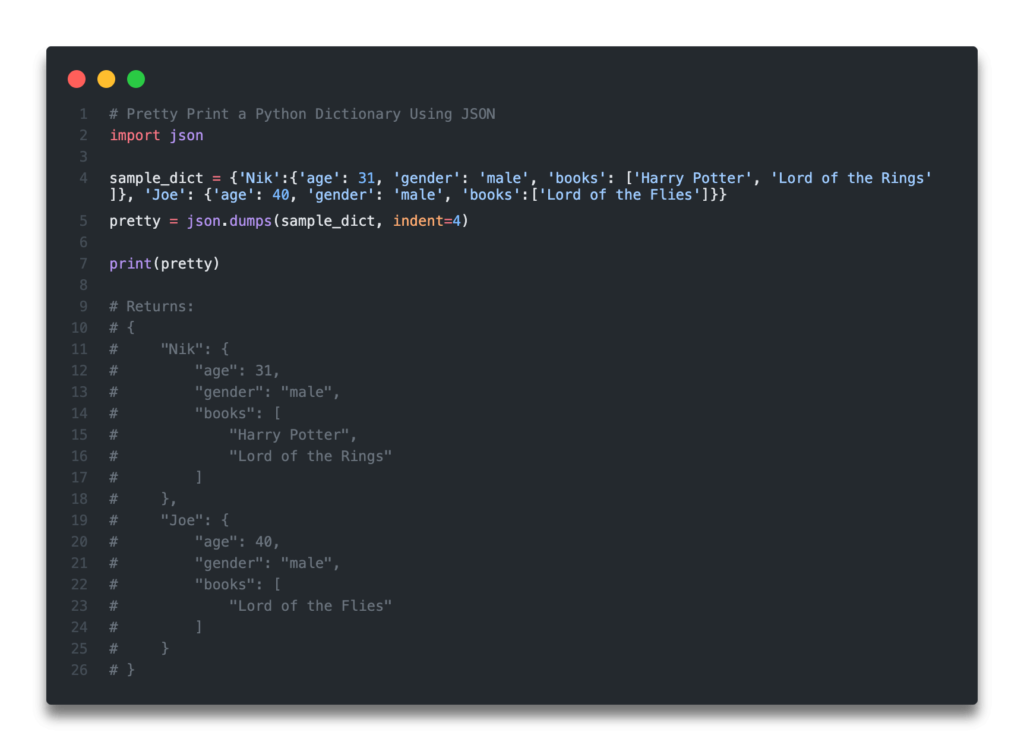
In certain situations, it may be necessary to print dictionaries with their keys in a specific order. This is particularly useful for maintaining consistency, readability, and ease of comparison when working with tabular data.
Using the sorted() Function
The sorted()function can be used to sort the keys of a dictionary before printing. The function takes a dictionary as an argument and returns a list of keys in sorted order.
>>> my_dict = 'apple': 1, 'banana': 2, 'cherry': 3 >>> sorted_keys = sorted(my_dict) >>> for key in sorted_keys: ... print(key, my_dict[key]) apple 1 banana 2 cherry 3
Using the OrderedDict Class
The OrderedDictclass from the collectionsmodule maintains the order of keys as they are inserted.
This provides a more efficient and convenient way to print dictionaries with keys in a specific order.
>>> from collections import OrderedDict
>>> my_dict = OrderedDict([('apple', 1), ('banana', 2), ('cherry', 3)])
>>> for key in my_dict:
... print(key, my_dict[key])
apple 1
banana 2
cherry 3 Printing Dictionaries with Specific Key-Value Pairs
In certain scenarios, it may be necessary to print only a subset of key-value pairs from a dictionary.
This can be achieved using various methods, including the get() method and list comprehensions.
Using the get() Method
The get() method allows you to retrieve the value associated with a specific key from a dictionary. If the key does not exist in the dictionary, the method returns None by default. However, you can provide a second argument to the get() method to specify a default value to return in case the key is not found.
To print only specific key-value pairs using the get() method, you can iterate over the keys of interest and use the get() method to retrieve the corresponding values.
“`pythonmy_dict = ‘name’: ‘John Doe’, ‘age’: 30, ‘city’: ‘New York’keys_of_interest = [‘name’, ‘city’]for key in keys_of_interest: value = my_dict.get(key) if value is not None: print(f”key: value”)“`
Using List Comprehensions
List comprehensions provide a concise way to filter and transform data in Python. You can use list comprehensions to create a new dictionary that contains only the key-value pairs where the keys are present in a specified list.
“`pythonmy_dict = ‘name’: ‘John Doe’, ‘age’: 30, ‘city’: ‘New York’keys_of_interest = [‘name’, ‘city’]filtered_dict = key: value for key, value in my_dict.items() if key in keys_of_interestprint(filtered_dict)“`
Custom Function
You can also create a custom function to take a dictionary and a list of keys as input and return a new dictionary containing only the key-value pairs where the keys are present in the input list.
“`pythonfrom typing import Dict, Listdef filter_dict_by_keys(my_dict: Dict, keys_of_interest: List)
-> Dict
“”” Filters a dictionary to include only the key-value pairs where the keys are present in a specified list. Args: my_dict: The input dictionary. keys_of_interest: The list of keys to filter by.
In Python, you can use the pprint.pprint() function to print a dictionary in a readable format. This function takes a dictionary as an argument and prints it with indentation and line breaks to make it easier to read. For example, the following code prints a dictionary of names and ages:
import pprint
names = "Alice": 25, "Bob": 30, "Carol": 35
pprint.pprint(names)
This will print the following output:
'Alice': 25, 'Bob': 30, 'Carol': 35
You can also use the print() function to print a dictionary, but it will print it in a single line without any indentation or line breaks. For example, the following code prints the same dictionary as above:
print(names)
This will print the following output:
'Alice': 25, 'Bob': 30, 'Carol': 35
Which method you use to print a dictionary will depend on your specific needs. If you need to print a dictionary in a readable format, then you should use the pprint.pprint() function. If you need to print a dictionary in a single line, then you can use the print() function.
If you are looking for information on how to mount a canvas print, you can find helpful instructions here.
To continue learning about how to print dictionaries in Python, you can refer to the official documentation here.
Returns: A new dictionary containing only the key-value pairs where the keys are present in the input list. “”” filtered_dict = key: value for key, value in my_dict.items() if key in keys_of_interest return filtered_dict“`
Custom Demonstration
Here is a custom demonstration of the filter_dict_by_keys() function:
“`pythonmy_dict = ‘name’: ‘John Doe’, ‘age’: 30, ‘city’: ‘New York’keys_of_interest = [‘name’, ‘city’]filtered_dict = filter_dict_by_keys(my_dict, keys_of_interest)print(filtered_dict)“`
Expected Output:
“`’name’: ‘John Doe’, ‘city’: ‘New York’“`
Handling Empty Input
The filter_dict_by_keys() function will handle the case where the input dictionary does not contain any of the specified keys by returning an empty dictionary.
“`pythonmy_dict = keys_of_interest = [‘name’, ‘city’]filtered_dict = filter_dict_by_keys(my_dict, keys_of_interest)print(filtered_dict)“`
Expected Output:
“““
Printing Dictionaries with Multiple Lines per Entry
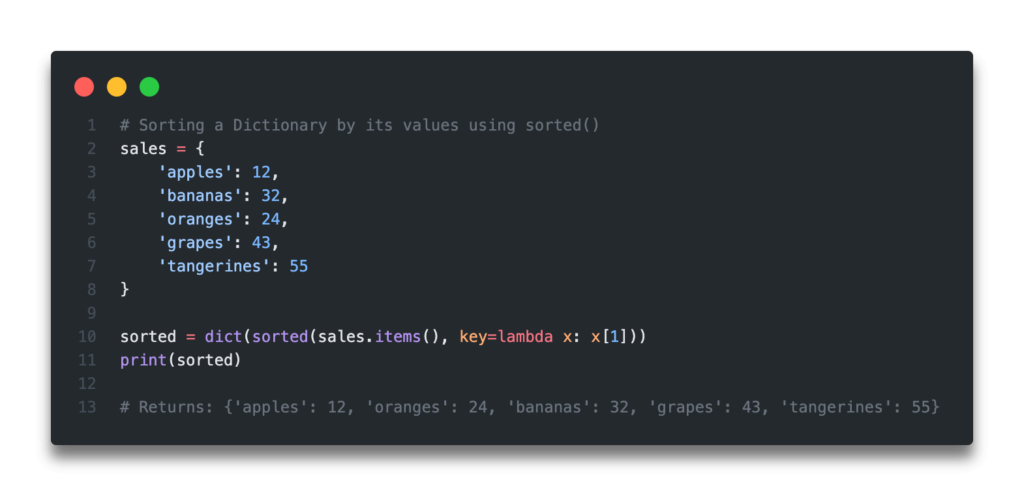
Printing dictionaries with multiple lines per entry can be useful in situations where the dictionary contains a large number of key-value pairs or when the values themselves are lengthy strings. This can make the output more readable and easier to compare.
There are two main approaches to printing dictionaries with multiple lines per entry: using the join()method or using string concatenation.
Using the join() Method
The join()method can be used to join a list of strings into a single string. This can be useful for printing dictionaries with multiple lines per entry, as each key-value pair can be represented as a string and then joined together using the join()method.
Here is an example of using the join()method to print a dictionary with multiple lines per entry:
“`pythonmy_dict = ‘name’: ‘John Doe’, ‘age’: 30, ‘city’: ‘New York’# Create a list of strings, each representing a key-value pairkey_value_pairs = []for key, value in my_dict.items(): key_value_pairs.append(f’key: value’)# Join the list of strings into a single stringoutput = ‘\n’.join(key_value_pairs)# Print the outputprint(output)“`
Using String Concatenation
String concatenation can also be used to print dictionaries with multiple lines per entry. This involves using the +operator to concatenate strings together.
Here is an example of using string concatenation to print a dictionary with multiple lines per entry:
“`pythonmy_dict = ‘name’: ‘John Doe’, ‘age’: 30, ‘city’: ‘New York’# Create a string representing the dictionaryoutput = ”for key, value in my_dict.items(): output += f’key: value\n’# Print the outputprint(output)“`
Benefits and Drawbacks of Each Approach
The join()method is generally more concise and easier to read than string concatenation. However, string concatenation can be more flexible, as it allows for more control over the formatting of the output.
The following table summarizes the key differences between the two approaches:
| Feature | join() Method | String Concatenation |
|---|---|---|
| Conciseness | More concise | Less concise |
| Readability | Easier to read | Less easy to read |
| Flexibility | Less flexible | More flexible |
Custom Function for Printing Dictionaries with Multiple Lines per Entry
A custom function can be written to print dictionaries with multiple lines per entry. This can be useful if you need to print dictionaries in this format on a regular basis.
Here is an example of a custom function that can be used to print dictionaries with multiple lines per entry:
“`pythondef print_dict_with_multiple_lines(my_dict): “”” Prints a dictionary with multiple lines per entry. Args: my_dict (dict): The dictionary to be printed. “”” # Create a list of strings, each representing a key-value pair key_value_pairs = [] for key, value in my_dict.items(): key_value_pairs.append(f’key: value’) # Join the list of strings into a single string output = ‘\n’.join(key_value_pairs) # Print the output print(output)“`
Advantages and Disadvantages of Using a Custom Function
Using a custom function to print dictionaries with multiple lines per entry has the following advantages:
- It is concise and easy to use.
- It can be reused to print multiple dictionaries.
However, using a custom function also has the following disadvantages:
- It is not as flexible as using the
join()method or string concatenation. - It may not be necessary if you only need to print dictionaries with multiple lines per entry on a few occasions.
Error Handling when Printing Dictionaries

Printing dictionaries in Python can sometimes lead to errors, such as when accessing invalid keys or attempting to print non-string values. It’s important to handle these errors gracefully to ensure the program runs smoothly and provides meaningful feedback to the user.
There are several strategies for handling errors when printing dictionaries:
- Checking for valid keys before accessing values:Before attempting to access a value from a dictionary, it’s good practice to check if the key exists. This can be done using the `in` operator or by catching a `KeyError` exception.
- Converting non-string values to strings before printing:If a dictionary contains non-string values, such as numbers or lists, they need to be converted to strings before being printed. This can be done using the `str()` function.
In addition to these strategies, it can be useful to create a custom error class to handle dictionary printing errors. This class can be used to catch and handle errors in a consistent manner, providing a more informative error message to the user.
Finally, it’s important to write unit tests to test the error handling strategies. This will help ensure that the program handles errors correctly and provides the expected output.
Performance Considerations for Printing Dictionaries
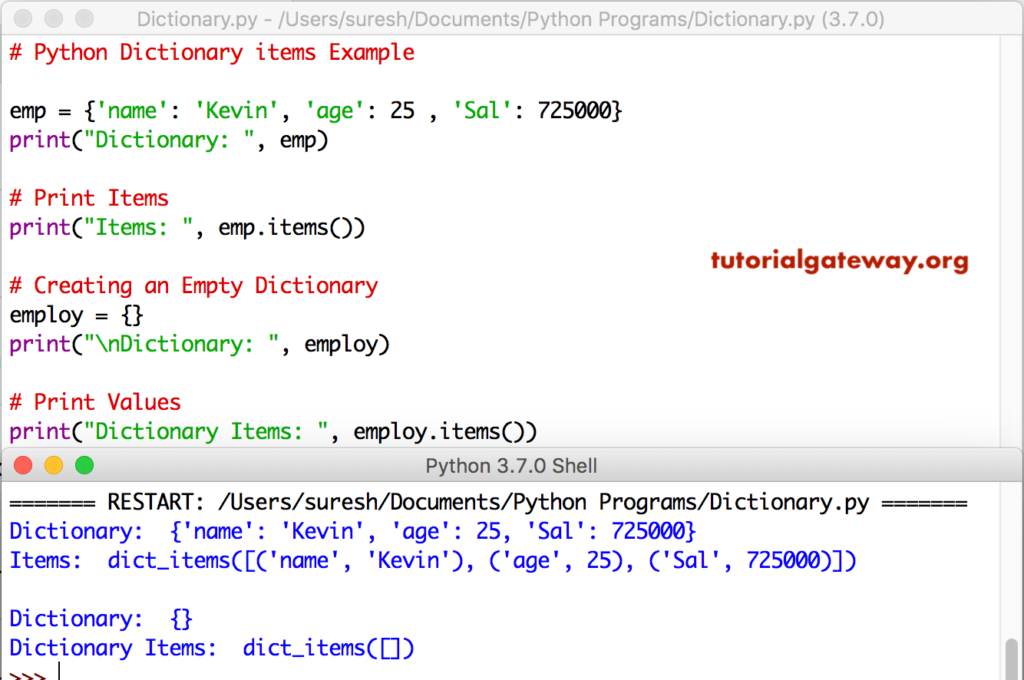
Printing large dictionaries can have performance implications due to the need to iterate over all key-value pairs and convert them to strings. The following tips can help optimize performance:
Lazy Evaluation
Lazy evaluation involves using a generator function to yield key-value pairs on demand, rather than creating a list of all pairs at once. This can save memory and improve performance for large dictionaries.
Caching
Caching the string representation of the dictionary can improve performance for repeated printing. This can be achieved by storing the string representation in a variable or using a decorator function.
Advanced Techniques for Printing Dictionaries
Advanced techniques for printing dictionaries offer enhanced customization and flexibility, enabling users to present data in visually appealing and informative ways. These techniques include:
Using Custom Data Structures
Custom data structures, such as trees or graphs, can be employed to organize and present dictionary data in a hierarchical or network-like manner. This approach allows for complex relationships and dependencies within the dictionary to be represented clearly.
Creating Interactive Visualizations
Interactive visualizations, such as charts, graphs, or dashboards, can be created using third-party libraries or custom code. These visualizations enable users to explore and analyze dictionary data dynamically, providing insights that may not be readily apparent from a simple text-based representation.
Benefits of Advanced Techniques, How to print dictionary in python
* Enhanced Readability:Custom data structures and visualizations can improve the readability and comprehension of complex dictionary data.
Ease of Comparison
Visual representations facilitate the comparison of multiple dictionaries or key-value pairs, making it easier to identify similarities and differences.
Customizable Output
To print a dictionary in Python, you can use the print() function. The print() function takes a dictionary as an argument and prints the keys and values of the dictionary in a human-readable format. For example, the following code prints the keys and values of the dictionary my_dict:
“`python
my_dict = ‘name’: ‘John Doe’, ‘age’: 30
print(my_dict)
“`
Output:
“`
‘name’: ‘John Doe’, ‘age’: 30
“`
You can also use the pprint() function to print a dictionary in a more readable format. The pprint() function indents the keys and values of the dictionary and prints them on multiple lines. For example, the following code prints the keys and values of the dictionary my_dict in a more readable format:
“`python
import pprint
my_dict = ‘name’: ‘John Doe’, ‘age’: 30
pprint.pprint(my_dict)
“`
Output:
“`
‘name’: ‘John Doe’,
‘age’: 30
“`
The pprint() function is especially useful for printing large dictionaries.
In addition to printing dictionaries, you can also print other data structures in Python, such as lists, tuples, and sets. The print() and pprint() functions can be used to print any data structure in Python.
For more information on printing dictionaries in Python, see the Python documentation on the print() and pprint() functions.
You can also find more information on printing do not enter signs to print in Python by searching online.
Advanced techniques allow for greater customization of the output, enabling users to tailor the presentation to their specific needs and preferences.
Limitations of Advanced Techniques
* Complexity:Implementing custom data structures or creating interactive visualizations can be complex and time-consuming, requiring specialized knowledge and skills.
Performance Overhead
Advanced techniques may introduce performance overhead, especially when dealing with large or complex dictionaries.
Portability
Custom data structures and visualizations may not be portable across different platforms or environments, limiting their usability in certain contexts.
Best Practices for Printing Dictionaries

When printing dictionaries in Python, it’s essential to consider readability, maintainability, and performance. Here are some best practices to follow:
Use the pprint module:The pprint module provides a pretty-printer function that formats dictionaries in a visually appealing and structured way. It indents nested dictionaries and aligns key-value pairs, making the output easier to read and understand.
Customize output with format strings:Format strings allow you to control the appearance of printed dictionaries. You can specify the field width, alignment, and other formatting options to create a custom output that meets your specific needs.
Print dictionaries with keys in a specific order:If you want to print dictionaries with keys in a specific order, you can use the sorted() function to sort the keys before printing. This ensures that the output is consistent and predictable.
Print dictionaries with specific key-value pairs:You can use the get() method to print specific key-value pairs from a dictionary. This is useful when you only need to access certain values from the dictionary.
Print dictionaries with multiple lines per entry:If you have dictionaries with long key-value pairs, you can print them with multiple lines per entry to improve readability. You can use the pprint module or custom formatting to achieve this.
Handle errors when printing dictionaries:It’s important to handle errors when printing dictionaries, such as when a key doesn’t exist or the dictionary is empty. You can use try-except blocks to catch these errors and handle them gracefully.
Consider performance when printing dictionaries:Printing large dictionaries can be computationally expensive. If performance is a concern, you should use efficient printing methods, such as using the pprint module or customizing output with format strings.
Use third-party libraries or custom functions:There are several third-party libraries and custom functions available that provide enhanced printing capabilities for dictionaries. These libraries can help you create visually appealing and informative outputs.
Real-World Examples of Printing Dictionaries

Printing dictionaries is a common task in various practical applications. Here are a few real-world examples:
Data Analysis
- In data analysis, dictionaries are used to store and organize data in a structured format. Printing dictionaries allows analysts to inspect the data, identify patterns, and draw insights.
- For example, a dictionary could be used to store customer information, such as their names, addresses, and purchase history. Printing this dictionary would allow analysts to quickly identify customers who have made multiple purchases or live in a specific region.
Configuration Management
- In configuration management, dictionaries are used to store configuration settings for various systems and applications. Printing dictionaries helps administrators to review and verify these settings, ensuring that systems are configured correctly.
- For instance, a dictionary could be used to store the configuration settings for a web server, such as the port number, IP address, and SSL certificate. Printing this dictionary would allow administrators to check if the server is configured securely and efficiently.
Web Development
- In web development, dictionaries are used to store data that is passed between different parts of a web application. Printing dictionaries can help developers to debug errors and understand how data is being processed.
- For example, a dictionary could be used to store the form data submitted by a user. Printing this dictionary would allow developers to verify that the data was received correctly and is in the expected format.
Testing and Debugging
- In testing and debugging, dictionaries are used to store test results and error messages. Printing dictionaries can help testers to identify and fix issues in the code.
- For example, a dictionary could be used to store the results of a unit test, including the test name, status, and any error messages. Printing this dictionary would allow testers to quickly identify which tests failed and why.
Key Insights and Takeaways
- Printing dictionaries is a valuable tool in various practical applications, including data analysis, configuration management, web development, and testing and debugging.
- By printing dictionaries, professionals can inspect data, review settings, debug errors, and gain insights into the behavior of systems and applications.
- Understanding how to effectively print dictionaries is essential for efficient and effective work in these domains.
Additional Resources for Printing Dictionaries in Python

To further enhance your understanding of printing dictionaries in Python, consider exploring the following resources:
Documentation
- Python Official Documentation:Provides comprehensive documentation on the print() function and other methods for printing dictionaries.
- PrettyPrint Module Documentation:Offers detailed information on the pprint module for formatting dictionary output.
Tutorials
- Printing Dictionaries in Python: A Comprehensive Guide:A step-by-step tutorial covering various techniques for printing dictionaries.
- Pretty Printing Dictionaries in Python: Using pprint:A tutorial focused on using the pprint module to enhance the readability of dictionary output.
Online Forums
- Stack Overflow: Python Printing Dictionaries:A forum where you can find discussions and solutions related to printing dictionaries in Python.
- Python Forum: Printing Dictionaries:Another forum dedicated to Python programming, where you can ask questions and engage with the community on topics related to printing dictionaries.
Clarifying Questions
What is the simplest method to print a dictionary in Python?
The print() function provides a straightforward way to print dictionaries. Simply pass the dictionary as an argument to the print() function, and Python will display its contents.
How can I print a dictionary with specific key-value pairs?
To print only specific key-value pairs from a dictionary, you can use the get() method or list comprehensions. The get() method allows you to retrieve the value associated with a specific key, while list comprehensions enable you to filter the dictionary based on certain criteria.
What are the advantages of using the pprint module for printing dictionaries?
The pprint module offers enhanced capabilities for printing dictionaries, including improved readability and organization. It provides functions like pprint.pprint() and pprint.pformat() that allow you to format dictionaries as strings, making them easier to read and compare.